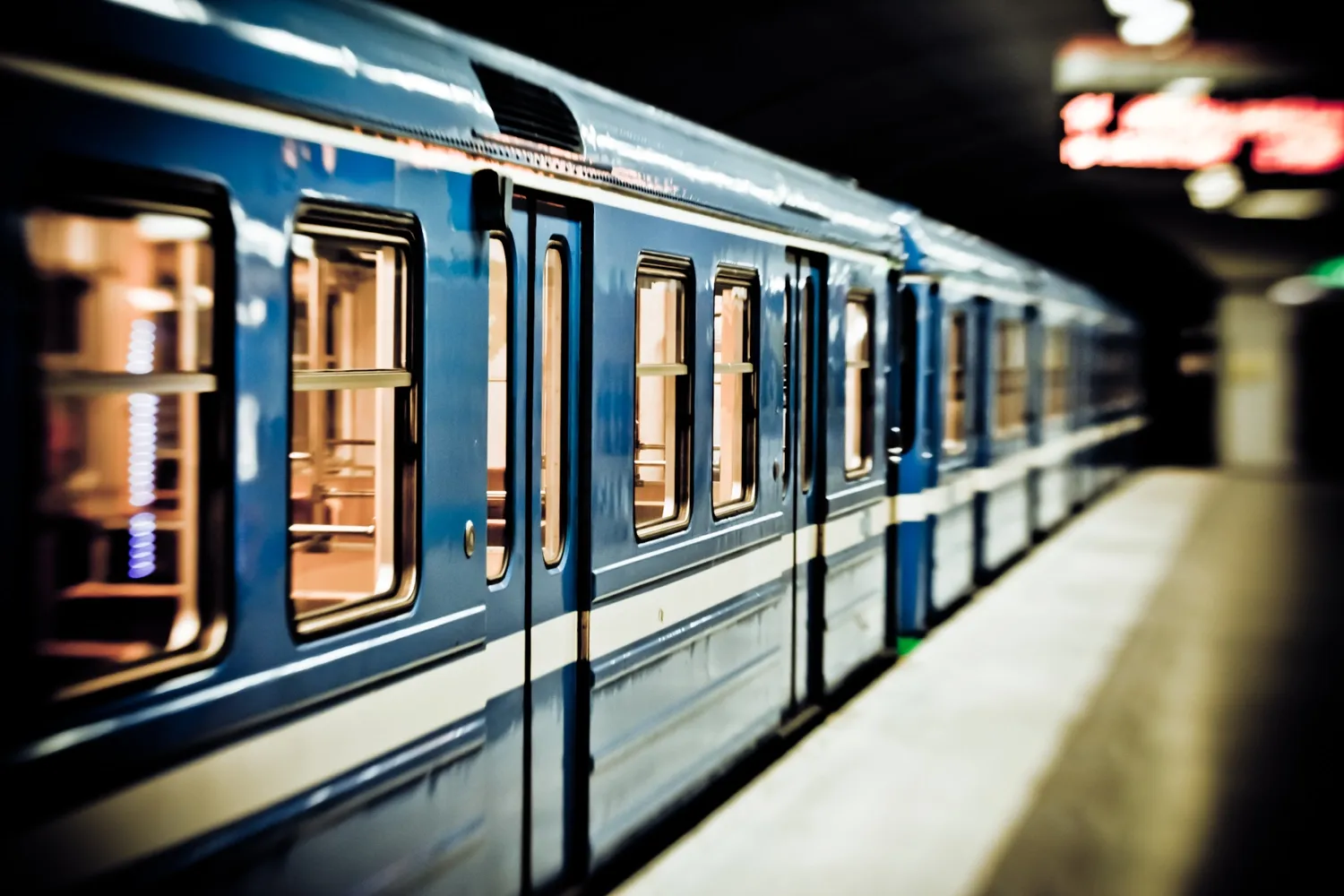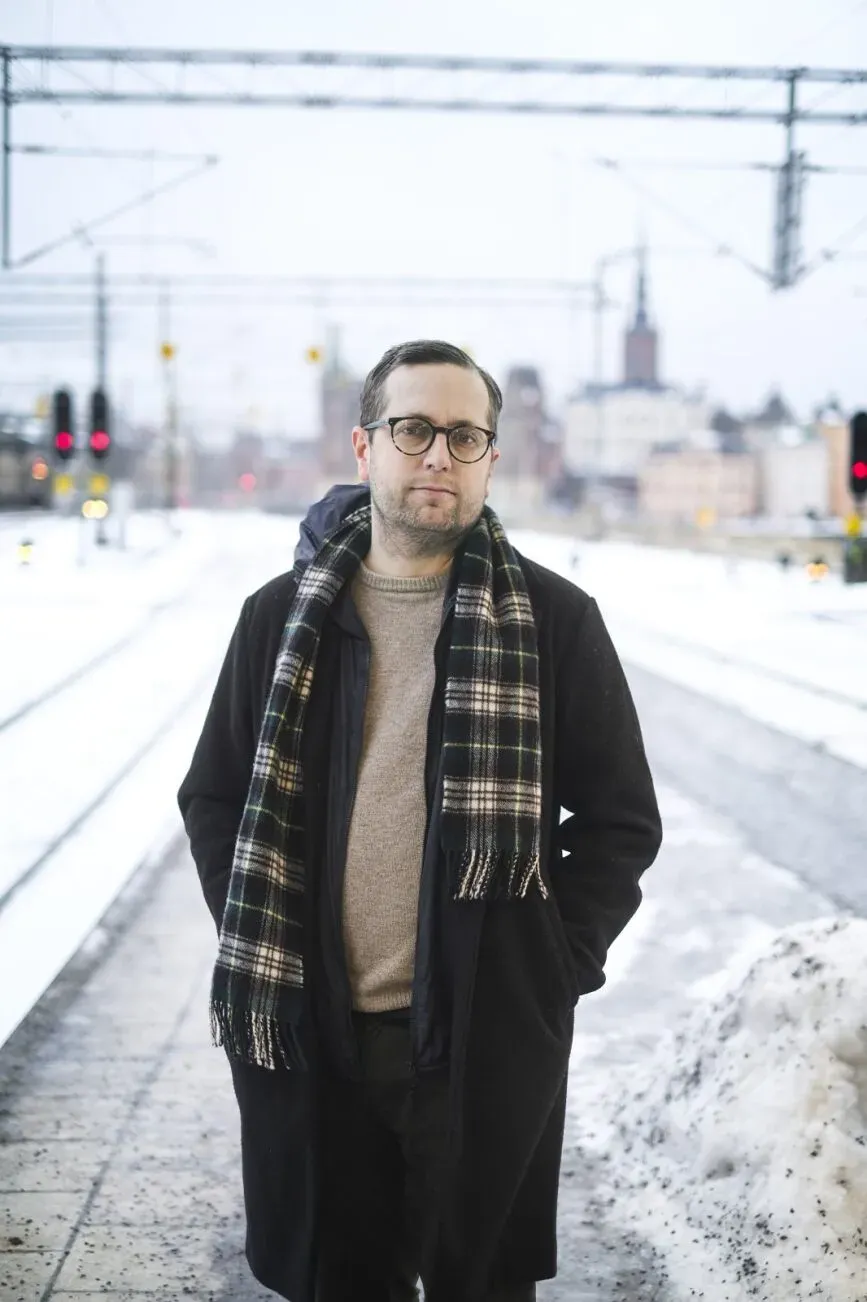"Simple measures can prevent suicide"

Every year, 135 people die by suicide in Sweden’s transport system, with about 85 of these occurring in rail transport. Johan Fredin Knutzén investigates intelligent measures that can save lives.
Johan Fredin-Knutzén worked for many years as a train driver and traffic controller in the Stockholm metro, but has switched to researching suicide prevention - a choice of subject that is no coincidence.
"As a train driver, the probability is unfortunately quite high that you will at some point hit a person," says Johan Fredin-Knutzén, who is also a clinical psychologist and doctoral student at the National Center for Suicide Research and Prevention (NASP) at Karolinska Institutet.
'Nine out of ten fatal accidents in rail transport are caused by suicide. This is a disaster for the person and their family, but also has a major impact on traffic and is horrible for passengers and train drivers to witness. According to one of Johan Fredin-Knutzén's studies, a human collision is the event that causes the most acute work related stress among train drivers.
He is now working on a thesis on suicide prevention in the transport system and is leading a research project on behalf of the Swedish Transport Administration. The goal is to find measures that can reduce the number of suicides in railways, but also bridges and road traffic.
A waist-high fence helped
Most of the suicides in the metro take place at stations. Platform screen doors, such as at Odenplan commuter train station in Stockholm, are effective barriers but are considered too expensive to introduce everywhere. Johan Fredin Knutzén is therefore investigating whether there are simpler measures that could work - and the results have surprised him.

In a pilot study, he has evaluated the effect of installing a waist-high fence between a commuter train track and a fast train track. The site has a history of suicide, but since the fence was installed in 2014, the number of suicides has decreased, and no suicides have occurred where someone has crossed the barrier.
"I thought we would see a small trend, but I was surprised by the large reduction," says Johan Fredin-Knutzén.
The fence is easy to climb over. But Johan Fredin-Knutzén believes it acts as a psychological barrier and a way for the person to buy time.
"It also adds a degree of uncertainty that can make a difference in the ambivalent state that a person contemplating suicide often finds themselves in," he says.
At another station in the Stockholm area, a transparent fence a few meters long has been built along the end of a platform. According to one of Johan Fredin-Knutzén's studies, this fence has significantly reduced the number of unauthorized track entries and delays, with a tendency to reduce the number of collisions.
"It is just as easy to jump down on the track and enter the tunnel as it was before. But you have to walk a slightly longer distance where you expose yourself to the public eye, and it's the social control that we think has an impact," he says.
He points out that the studies are small and that the results need to be confirmed in further research. But the results are in line with experiences from other countries where different types of partial and simpler barriers have been introduced, for example in Asia, half-height instead of full platform doors are used in some places.
"As suicides are rare events, it is difficult to prove anything in a single study. But I think there is enough empirical support to scale up this type of measure in the transportation system and continue to evaluate it," says Johan Fredin Knutzén.
Nets under bridges prevents suicides
The same thinking is behind the suicide prevention nets that can be seen under bridges in Switzerland and the US, for example. It is potentially possible to jump down onto the net and climb further over the edge - but they still reduce the number of suicides at the site.
"The effect is comparable to installing high fences on the bridge, which is sometimes difficult for technical reasons. The nets do not affect the design or view of the bridge in the same way," explains Johan Fredin-Knutzén.
According to Johan Fredin-Knutzén, research indicates that a prevented suicide attempt can make a lasting difference.
"For many people, it is a matter of rapid and ambivalent decision-making processes; it is not certain that the person will try to take their own life again if you succeed in preventing a suicide attempt," says Johan Fredin-Knutzén.
These measures are examples of method restriction, a strategy used by doctors and psychologists to help people who are suicidal.
"This can include locking up dangerous items such as weapons or medicines and giving someone else the key. This is to reduce access to a lethal method at a critical moment when people are at their most impulsive," says Johan Fredin Knutzén.
The effect of blue light is studied
Another measure that has been used mainly in Japan is to change the lighting - from white to blue light. There are studies that suggest that suicides are reduced in places with blue light, but it is unclear how it works.
"One hypothesis is that it has a calming effect, but it could also be that it affects people's movement patterns," explains Johan Fredin-Knutzén.
A pilot study he conducted in collaboration with Stockholm Public Transport, SL, found that people spent less time on parts of the platform that were illuminated with blue light.
"This suggests that vulnerable places such as platform ends should be equipped with such lighting. But if it turns out that it has a calming effect, then it may be a better idea to put blue lighting over the entire platform and ticket hall," says Johan Fredin-Knutzén, who plans to investigate this issue further in his research.
Other components of suicide prevention include cameras that alert people to the presence of people on the track and clearer lines and signage on platforms. But the transport system can only contribute with its limited part, emphasizes Johan Fredin-Knutzén.
"Preventing the suicide attempt itself is the last possibility for intervention; many other measures are needed much earlier. 'It is a broad and political question about how we create a good society where everyone feels included and valuable. It is also important to have resources to help those who suffer from hopelessness and mental suffering, which can lead to suicidal thoughts," says Johan Fredin-Knutzén.

The magazine Medical Science
The magazine Medical Science (Medicinsk Vetenskap) is published by Karolinska Institutet and targets the general public interested in medical science.
